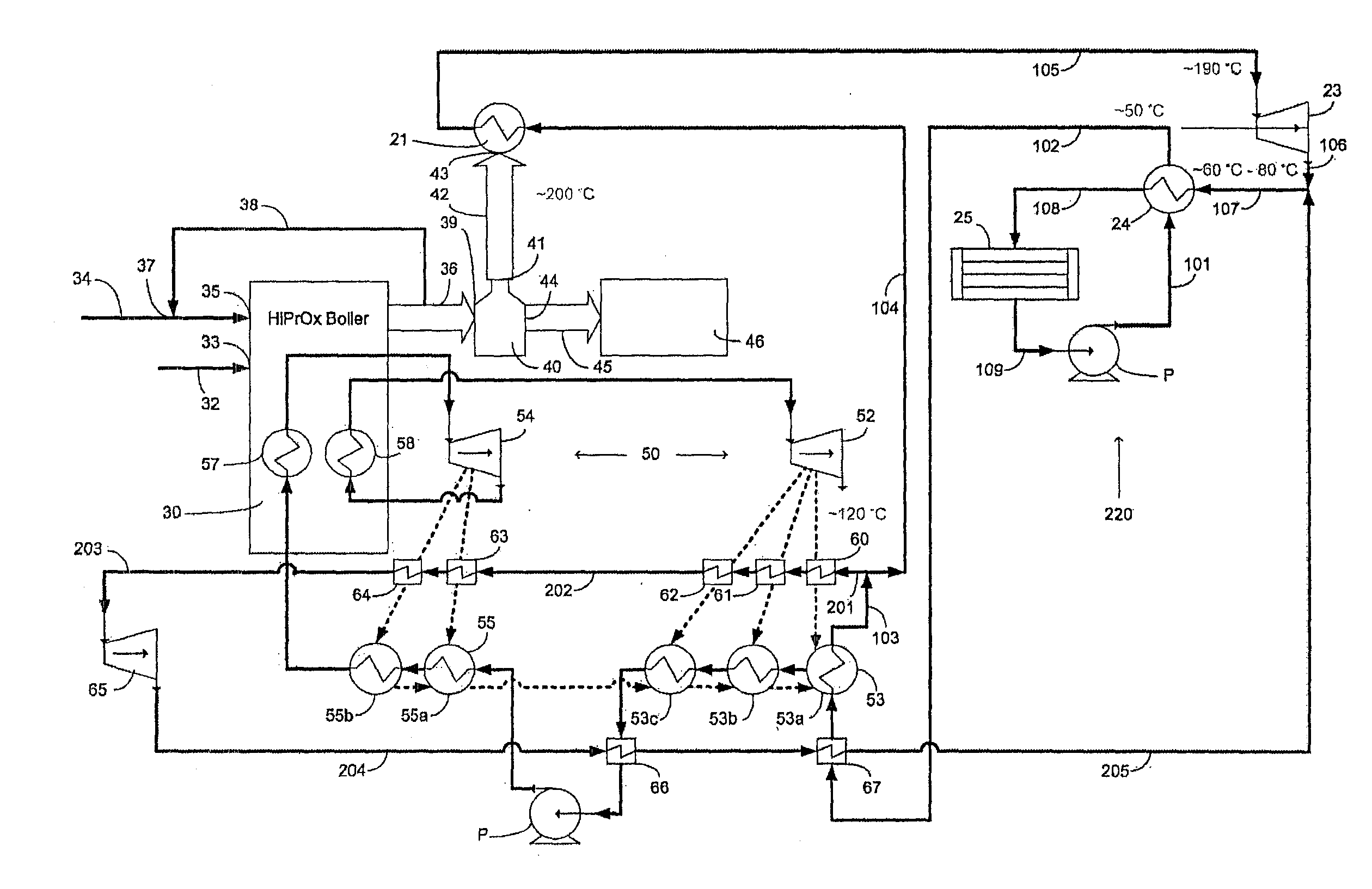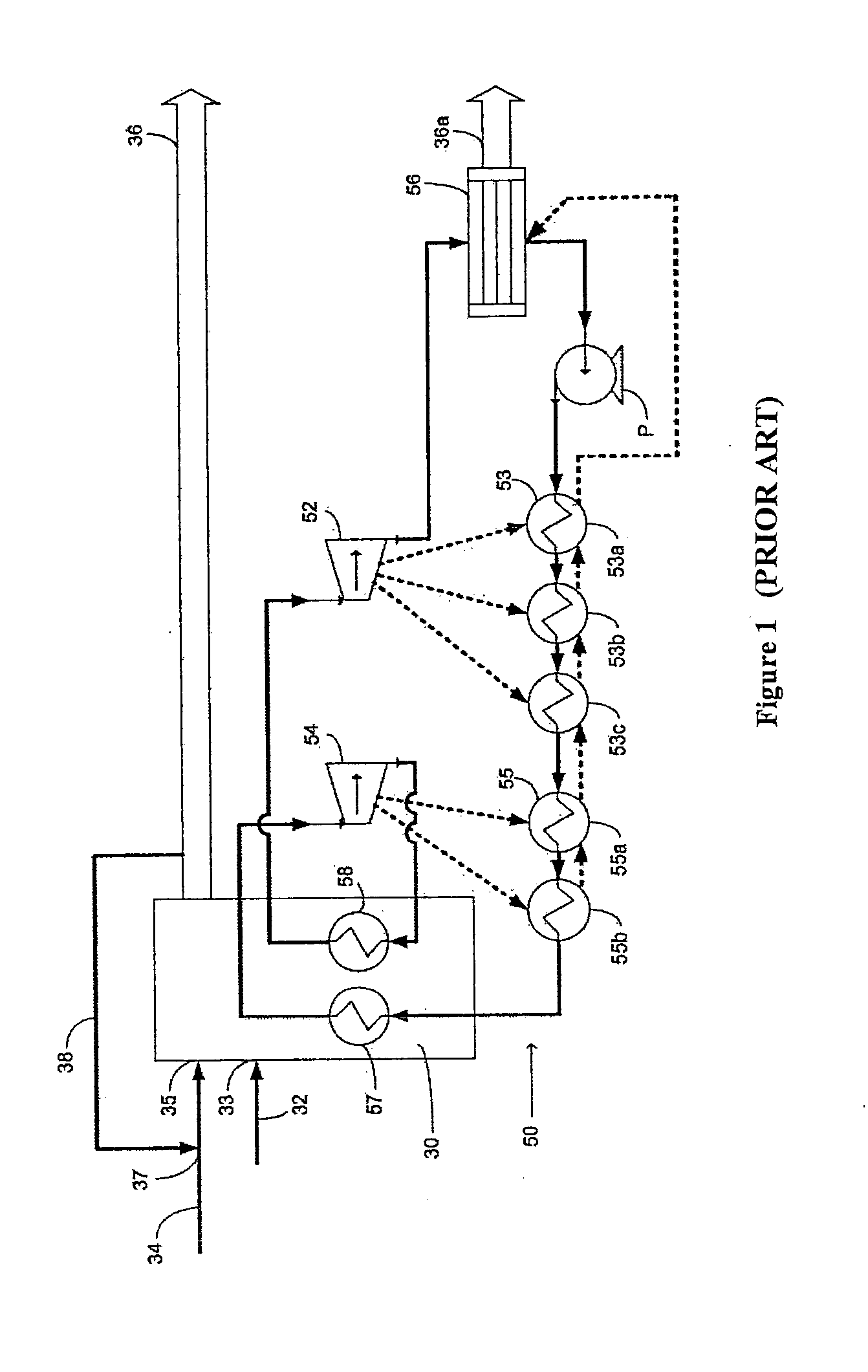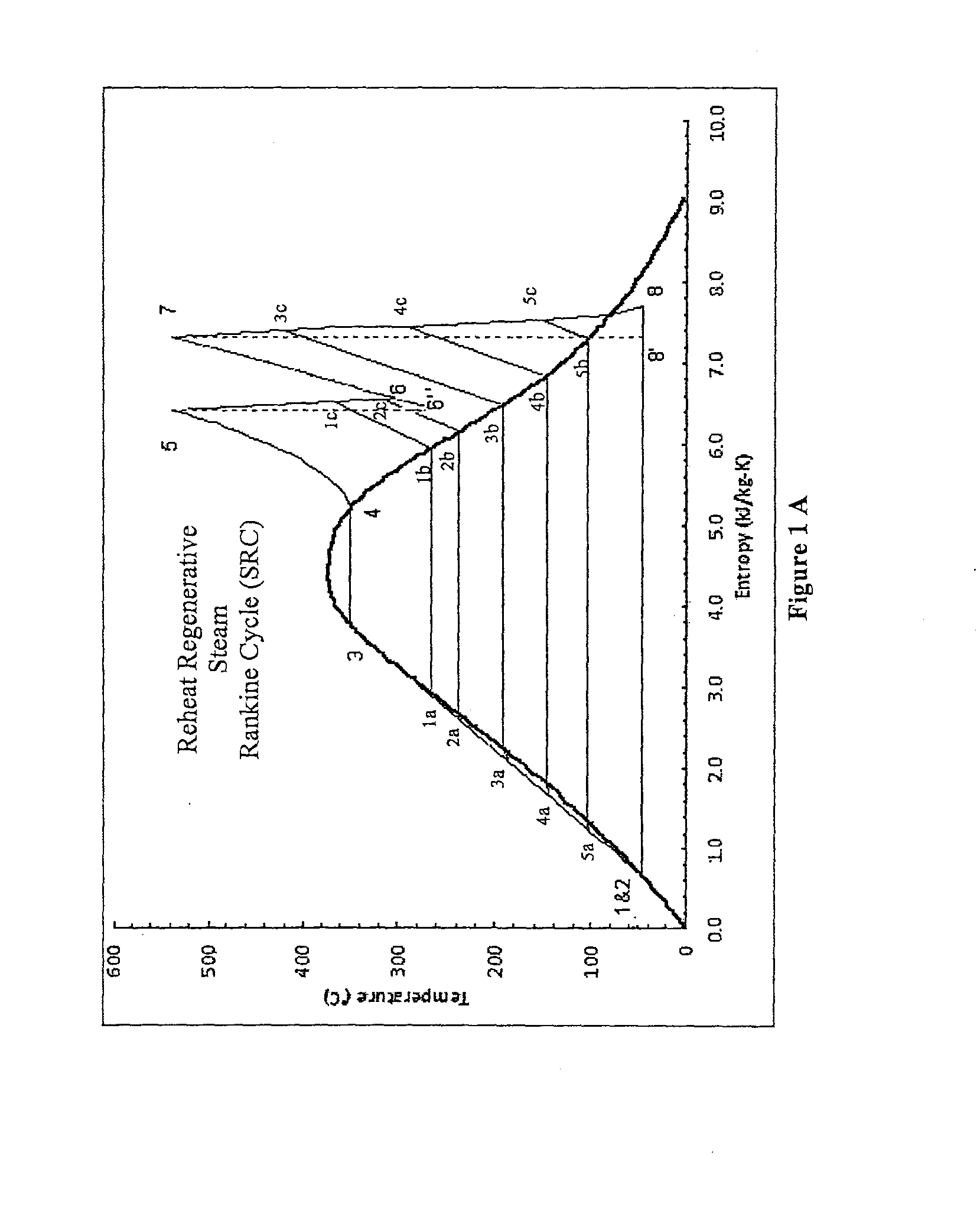Hybrid rankine cycle
a rankine cycle and hybrid technology, applied in the field of energy recovery, can solve the problems of inability to achieve the effect of reducing the cost of energy conversion, so as to achieve the effect of increasing the potential for orc heat recovery, maximizing energy conversion and overall efficiency, and improving the quality of li
- Summary
- Abstract
- Description
- Claims
- Application Information
AI Technical Summary
Benefits of technology
Problems solved by technology
Method used
Image
Examples
Embodiment Construction
[0039]FIG. 1 shows a schematic conventional layout of a reheat regenerative steam Rankine cycle thermal energy conversion system 50 of the prior art. FIG. 1A shows a corresponding temperature-entropy (T-S) diagram of the prior art system of FIG. 1.
[0040]The Rankine cycle system of FIG. 1 typically comprises a boiler or furnace 30 which is fed by a fuel supply from line 32 at a fuel inlet 33, and may optionally be fed by an air or oxygen supply from line 34 at an air or oxygen inlet 35. Flue gas generated by the combustion leaves furnace 30 in flue gas line 36. Optionally, a recirculation stream can be separated from the flue gas stream in flue gas line 36, to be selectively recirculated back in flue gas recirculation line 38 to be reintroduced to the furnace in a suitable manner, either through a separate inlet (not shown) or by joining the air or oxygen supply in line 34.
[0041]In Rankine cycle 50 of FIG. 1, expanded working fluid leaves an intermediate pressure / low pressure turbine...
PUM
 Login to View More
Login to View More Abstract
Description
Claims
Application Information
 Login to View More
Login to View More - R&D
- Intellectual Property
- Life Sciences
- Materials
- Tech Scout
- Unparalleled Data Quality
- Higher Quality Content
- 60% Fewer Hallucinations
Browse by: Latest US Patents, China's latest patents, Technical Efficacy Thesaurus, Application Domain, Technology Topic, Popular Technical Reports.
© 2025 PatSnap. All rights reserved.Legal|Privacy policy|Modern Slavery Act Transparency Statement|Sitemap|About US| Contact US: help@patsnap.com



